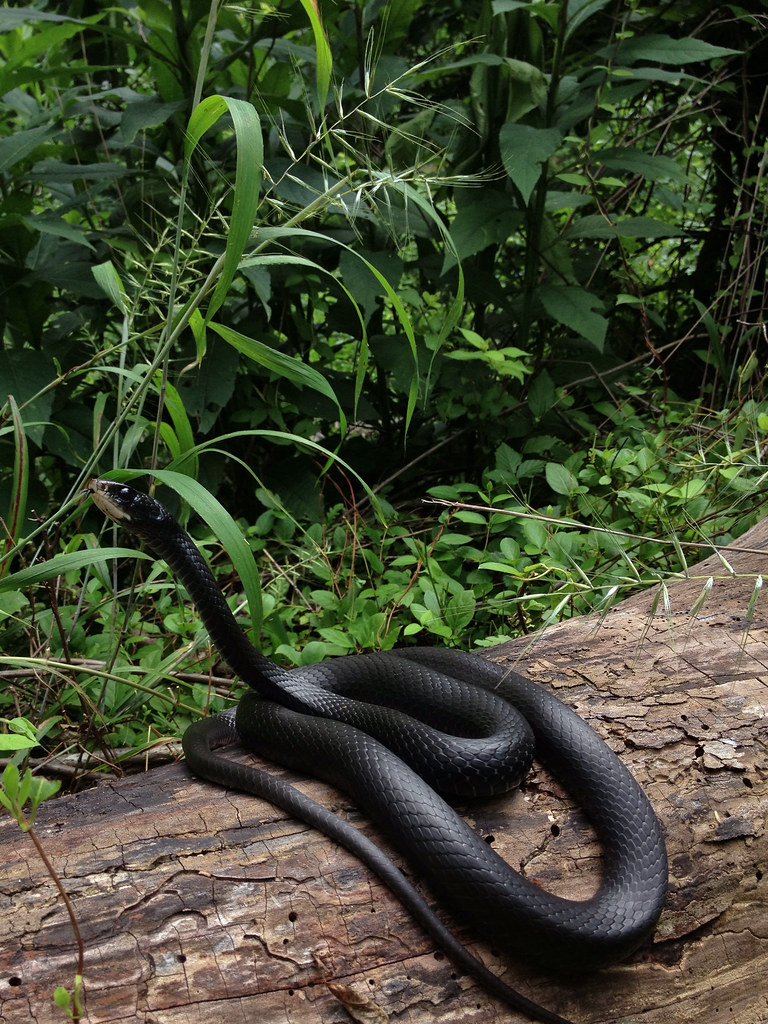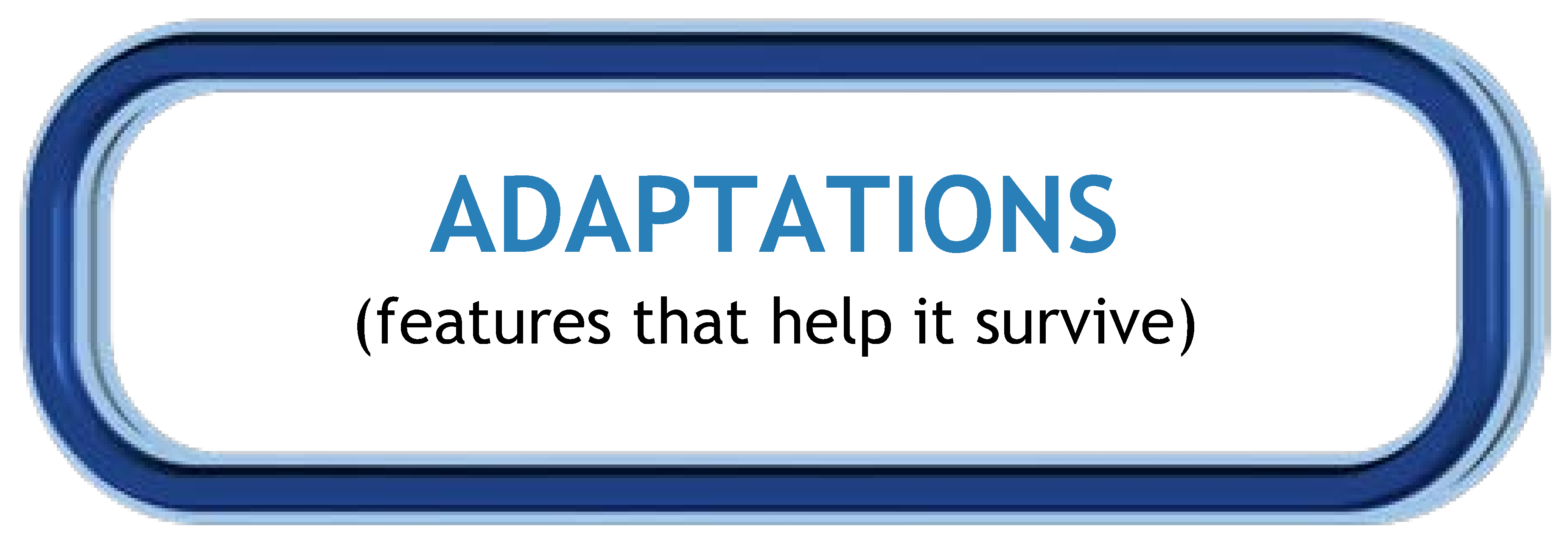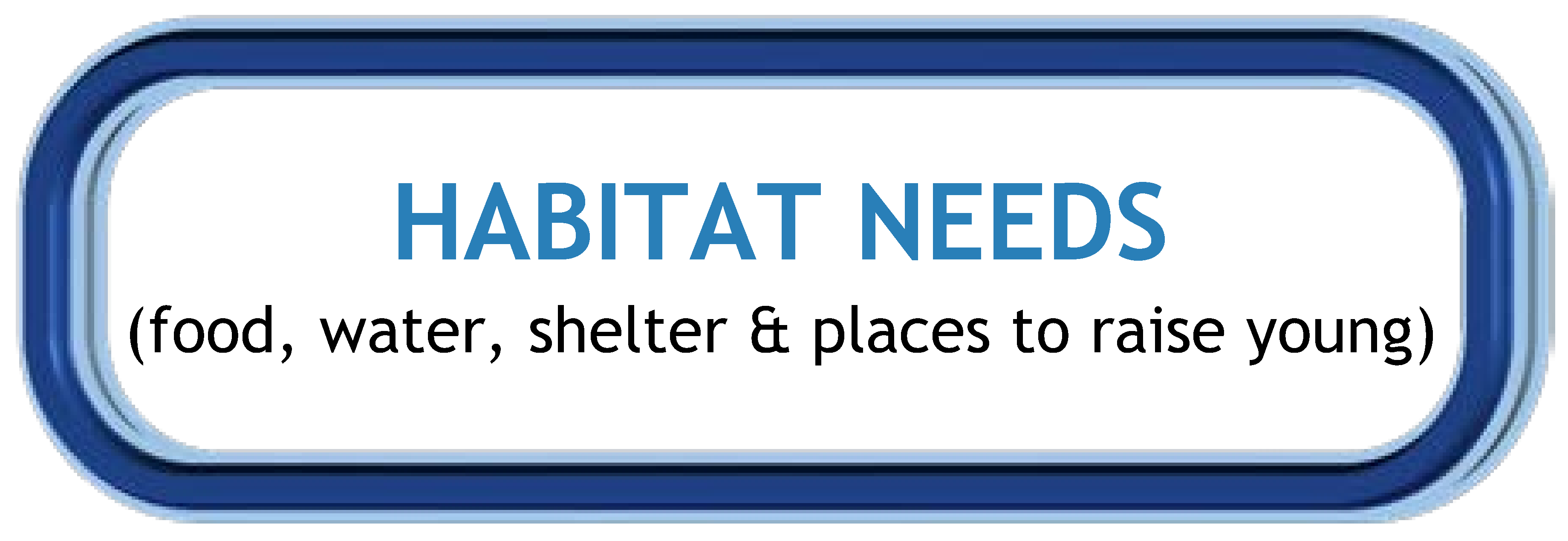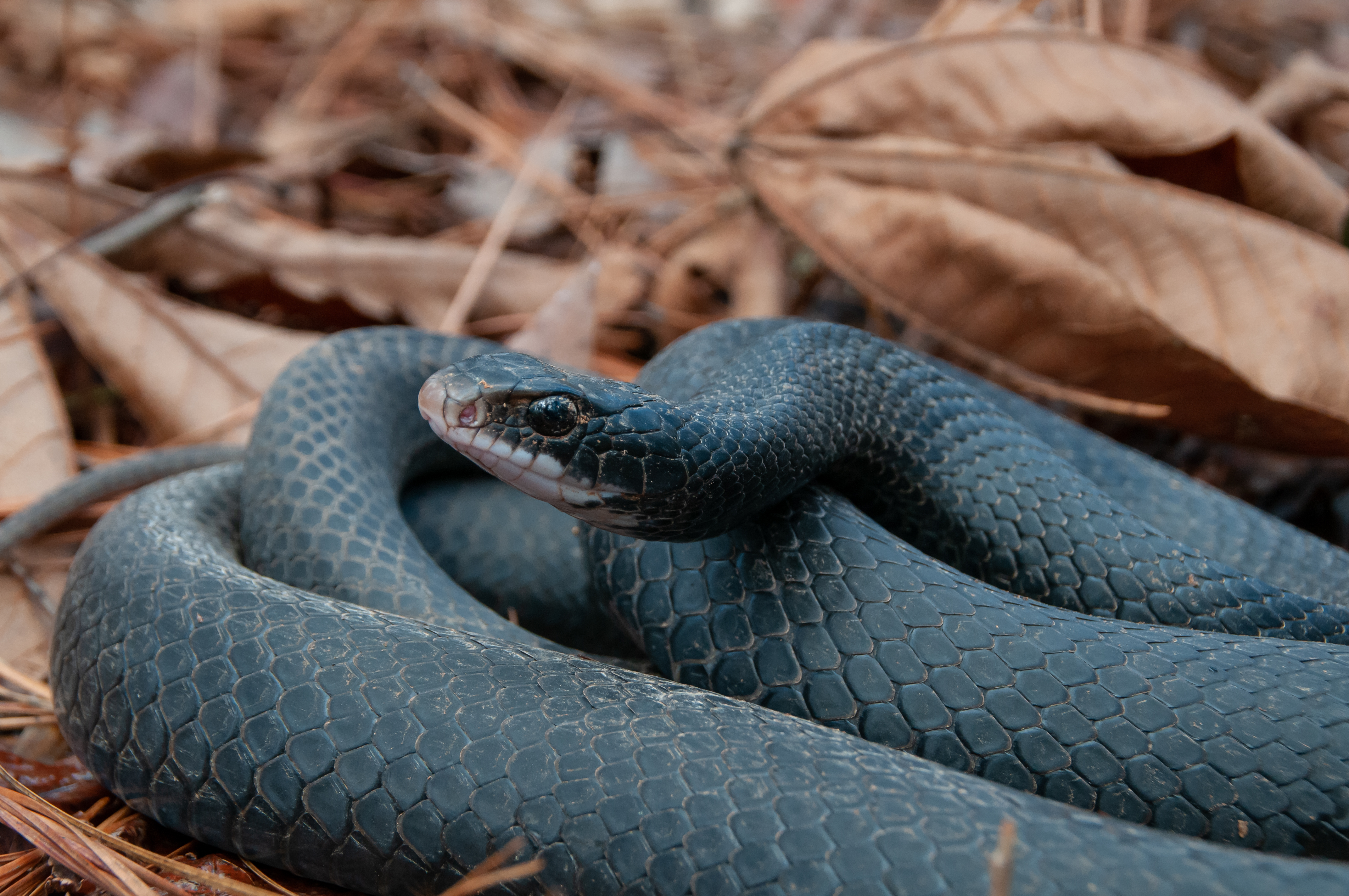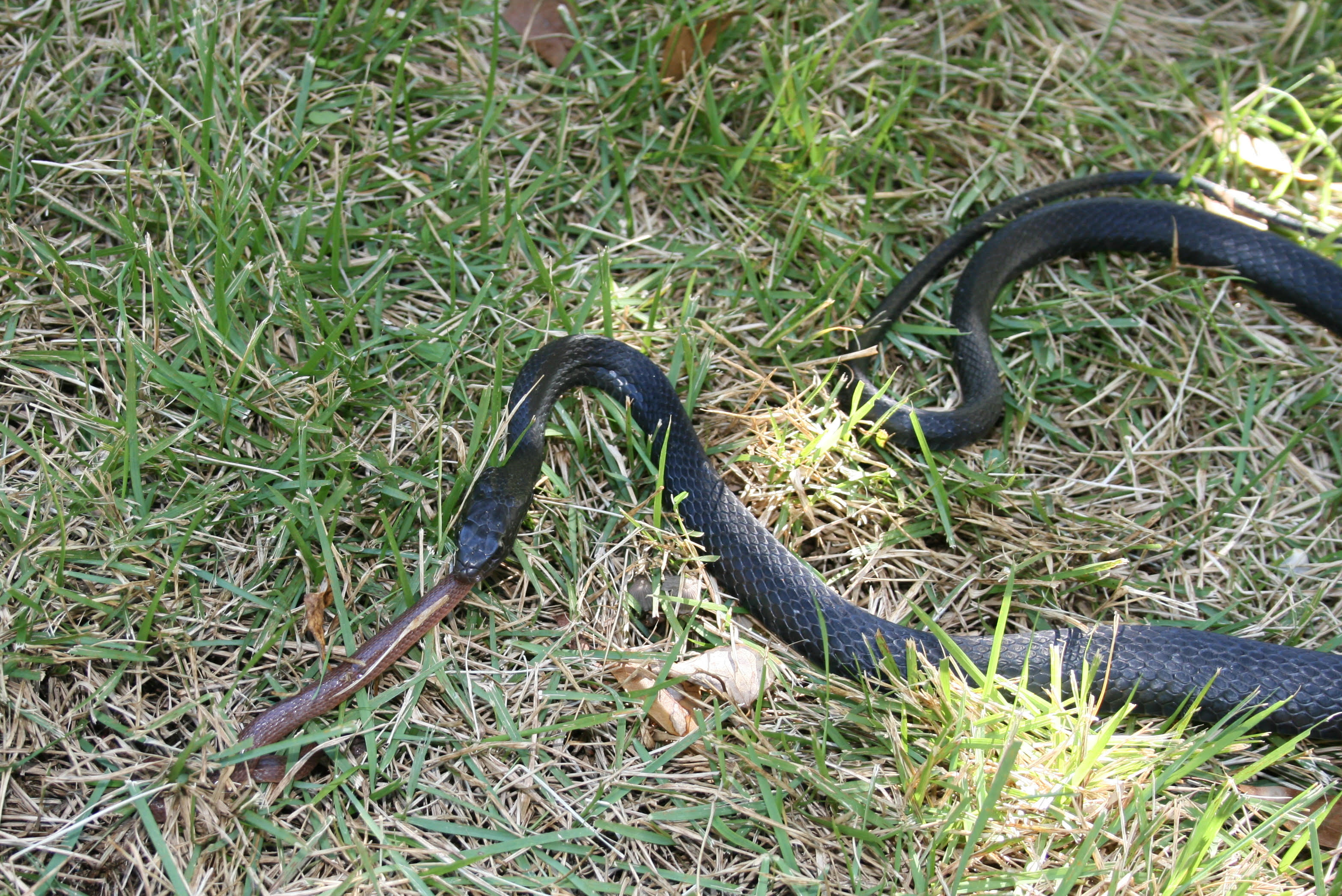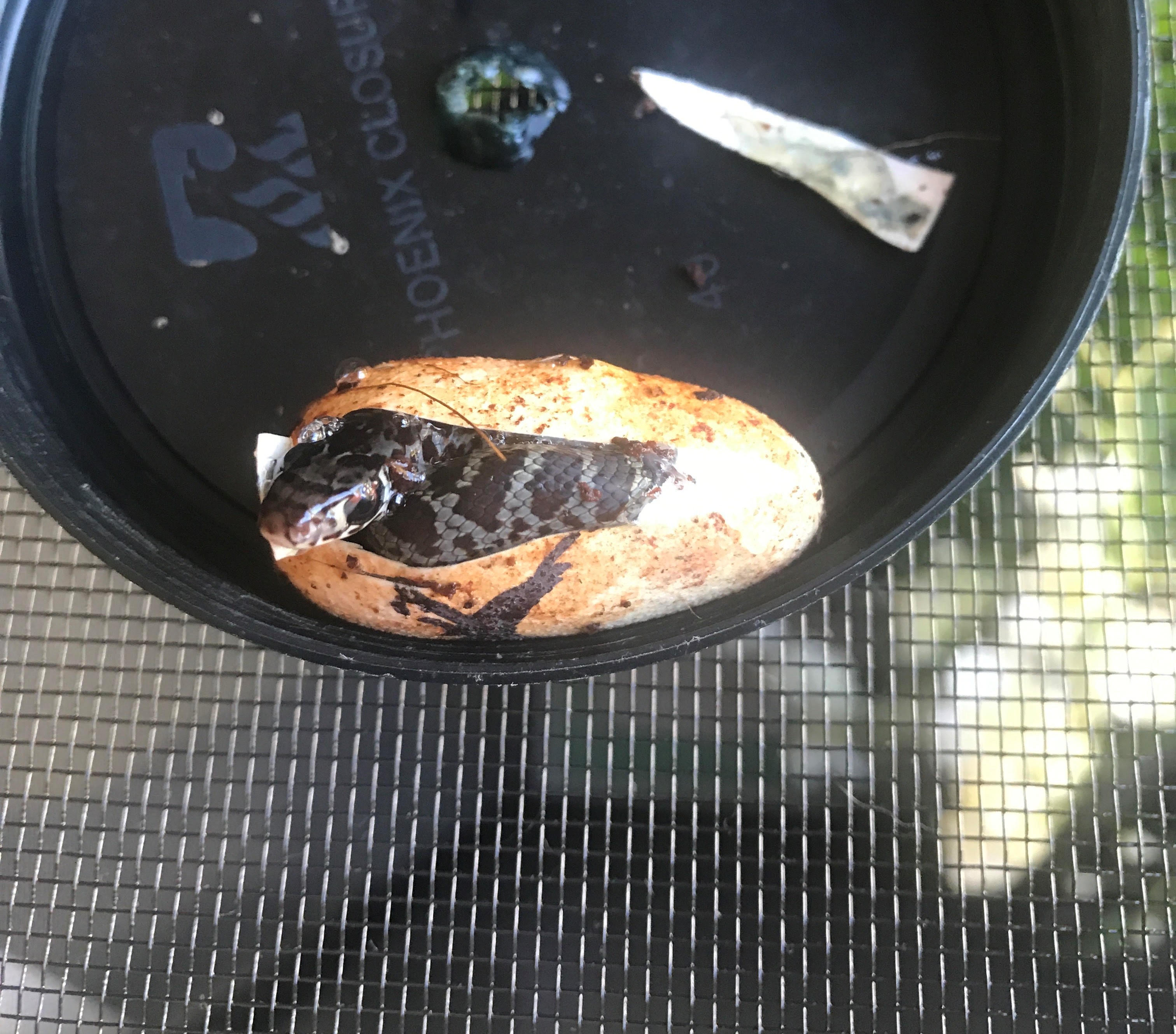Wonders of Wildlife: Black Racer
Black Racer
Scientific Name: Coluber constrictor
Found in Alabama: Common statewide, but declining in many areas
Diet: Carnivore (eats animals)
Learn more about... |
Black Racer in Habitat
Flikr - Fritz Flohr Reynolds
Click image to enlarge it
|
*Read AWF's "Snakes Saving Lives" article to learn more about how important snakes are to humans and our ecosystem.
How to Handle a Snake Encounter - a document made to help you and your students understand snakes and how to handle an encounter with one
| CLASSIFICATION |
|
What type of animal am I?
- I am a vertebrate (an animal with a spine or backbone).
- I am cold-blooded, so I cannot control my body temperature.
- I have scales on the outside of my body.
- I breathe with lungs just like you.
- I have do not have legs.
|
Scientists use basic traits to group animals into different taxonomic classes.
For a taxonomic classification chart comparing key traits of common backyard wildlife,
CLICK HERE! |
|
| The Black Racer is a REPTILE! |
| IDENTIFICATION TIPS |
| |
|
|
Size: |
- Average length of 3-5 feet long but some can reach lengths of over 6 feet
|
Black Racer
Adam Cooner
Click image to enlarge it
|
Key Characteristics: |
- Deep black on the back
- Black or gray underneath
- White patch underneat chin
- Smooth scales
|
Juveniles: |
- Babies are around 7-14 inches when they hatch
- Juveniles are brighter in color, ranging from tan to gray with reddish spots running down the back side
|
Juvenile Black Racer
Flickr - Kevin En
Click image to enlarge it
|
| Black racers are not venomous and pose no threat to humans! |
| ADAPTATIONS |
| |
| PHYSICAL ADAPTATIONS |
| |
| Black Racers consume whole prey: |
- Snakes don't have arms and hands like we do, so are not able to cut their food into pieces like we can.
- A snake's teeth are recurved (pointing slightly inward). Once they grab their prey (animals they eat), the recurved teeth prevent the animal from moving toward the front of the mouth. Instead, these teeth ensure that the prey moves toward the back of the mouth.
|
Black Racer Eating Rough Earth Snake
Gregory Glasscock
Click on image to enlarge it
|
- A snake's jaw structure allows it to consume prey without having to tear it apart. The lower jaw is composed of two separate pieces. These pieces are held together in the center by a stretchy ligament, allowing the space between the two pieces to increase. The upper and lower jaw components are more loosely connected than most animals, allowing the snake to open its mouth wider than its body.
- These structures, in addition to the slow forward movement of a snake's head along its prey, allow them to consume their prey whole.
|
| |
| Black Racers have scales: |
- Snakes, like all reptiles, have scales.
- Snakes don't have legs like we do and cannot walk. Instead, they slither along the ground. The scales on a snake's belly help "grab" onto small rough spots on the ground to create friction (resistance) and allow the snake to pull itself forward.
- Unlike us, snakes do not lose water through their skin in the form of sweat. The scales on a reptile also help prevent water loss by preventing evaporation (when water changes from liquid to gas) through the skin. This reduces the risk of dehydration for them and allows them to live in extremely dry environments.
|
| |
| |
| BEHAVIORAL ADAPTATIONS |
| |
| Black Racers are diurnal: |
- They are active during the day (diurnal).
|
| |
| Black Racers avoid predators: |
- Black racers perform several behaviors that help them avoid being eaten by predators (animals that eat them).
- When approached, a black racer is likely to quickly flee. They are faster and more agile than most other snakes, so a quick escape is their first defense. They are skillful climbers and swimmers, so they may move toward a bush or source of water when threatened.
- If a fast escape is not an option, they may try one or several warnings to scare away the threat.
- They are known to mimic rattlesnakes by shaking their tail against leaves or other materials to create a buzzing sound.
- They may release a foul-smelling musk.
- They may raise their head to strike or pretend like they are going to strike.
- Juveniles have an additional form of protection through camouflage (blends in with the surrounding environment) due to their blotchy or patchy coloration.
|
| |
| Black Racers hibernate: |
- The black racer is cold-blooded and does not produce its own body heat like we do.
- During the colder winter months, it must protect itself by entering a type of hibernation (becoming dormant as if it is in a deep sleep).
- Their breathing and heartbeat slow down during hibernation like your breathing and heartbeat slows down while you are asleep.
- This allows them to conserve energy.
- Although they are normally a solitary species (spend time alone without other black racers), they are known to hibernate in groups under the soil or in dens with other black racers.
|
| |
| Black Racers do not eat very often: |
- As humans, we must eat food multiple times a day to get energy, but adult black racers typically eat once a week.
- If food is unavailable or they are unsuccessful at hunting, they can miss a few weeks of eating becaues their digestive system is much slower than mammals' or birds'.
- Young gray rat snakes must eat more frequently than adults and cannot go as long without a meal because they do not have fat reserves built up at a young age.
|
| |
| |
|
|
| Life Cycle Stages of the Black Racer |
| |
|
|
Nest: |
- Eggs are deposited in little burrows in the leaf litter or soil, rotting logs, or old mammal burrows.
|
| |
|
|
Eggs: |
- Female lays 2-32 hard-shelled eggs (average of 20).
- Eggs can be up to 1.5 inches long and an inch wide.
|
| |
|
|
Life Span: |
|
| |
|
|
|
Black Racer Eggs
Flickr - Zach
Click on image to enlarge it
|
Black Racer Hatching
Chase Bowman
Click on image to enlarge it
|
|
|
|
|
| NATURAL Needs |
ADULTS |
YOUNG |
| Food |
- Will eat insects, lizards, other snakes, rodents, amphibians, birds, and bird eggs.
|
- Feed primarily on smaller prey including insects, spiders, frogs, small reptiles, rodents, and shrews.
|
| Water |
- Majority of hydration is obtained from food sources, but they will drink from puddles and other freshwater sources if needed.
|
| Shelter |
- Can be found in a diverse variety of habitats but prefer habitats near the edges of forests, swamps, hedgerows, thickets, and fields.
- Hide under cover or in burrows at night or on colder days.
|
| Places to Raise Young |
- Females lay their eggs in rotting logs, old mammal burrows, or cavities formed in leaf litter or soil.
|
|
BACKYARD
Habitat Needs |
ADULTS |
YOUNG |
| Food |
- Plant shrubs, thickets, and other forms of cover that would provide food sources and cover for larger prey (animals they eat) items.
|
- Plant natural grasses and other plants that will support invertebrates (animals without a backbone) and small vertebrate (animals with a backbone) prey.
|
| Water |
- Majority of water obtained through food sources.
- If a pond is not located nearby, provide a waterbath or puddling stations where freshwater can collect.
|
| Shelter |
- Do not remove rotting logs, leaf litter, or other debris.
- Plant native grasses, shrubs, and thickets that serve as a source of protection.
|
| Places to Raise Young |
- Do not remove rotting logs, leaf litter, and other debris that they might use as nesting sites.
|
|
| ECOLOGICAL ROLE |
| |
|
Animals play an important ecological role in the health of habitats and ecosystems.
*Read AWF's "Snakes Saving Lives" article to learn more about how important snakes are to humans and our ecosystem. |
| |
|
|
Food Source:
|
- Black racers are eaten by hawks, kingsnakes, and some mammals.
|
| |
|
Control Rodent Populations: |
- Black racers eat primarily small rodents such as mice and rats and help to control the population sizes of these animals.
- Population control for these rodents is very important, as they can cause significant damage to crops grown for human consumption and to electrical wiring in buildings.
|
| |
|
Benefits to Humans: |
- The rats and other rodents that rat snakes eat are direct and indirect carriers of diseases.
- Rat droppings can make humans sick with a variety of illnesses, and these rodents are also the main carriers of ticks which bite humans and can spread diseases such as Lyme Disease.
- Snakes help keep rodent populations under control which helps keep us safe and healthy.
|
INFORMATION SOURCES FOR THIS SPECIES
.








 Wildlife Tag
Wildlife Tag
